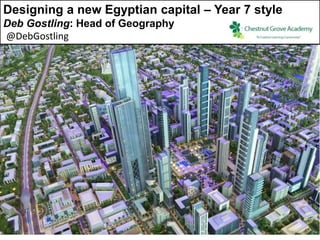The document discusses the challenges faced by Year 7 students in designing sustainable cities, highlighting their limited experience and understanding. It outlines a new curriculum approach that emphasizes establishing a foundational knowledge of urban issues before engaging in a design project for a new Egyptian capital. The structured process involved detailed case studies and flipped homework to foster deeper learning and promote innovative, well-informed city designs.




















